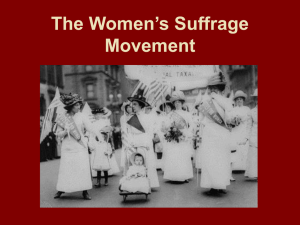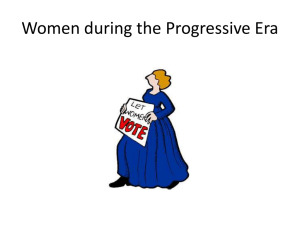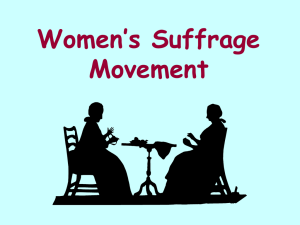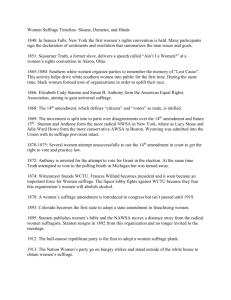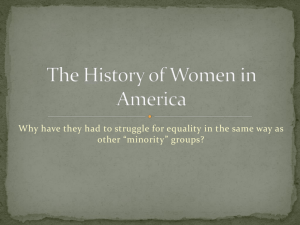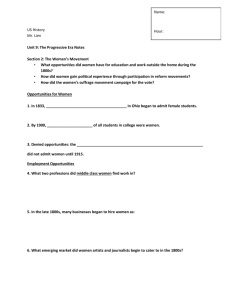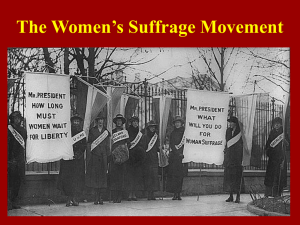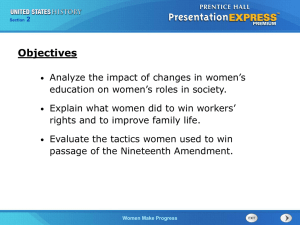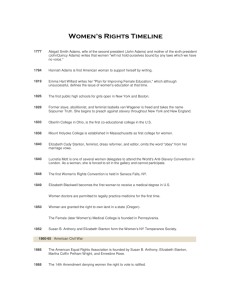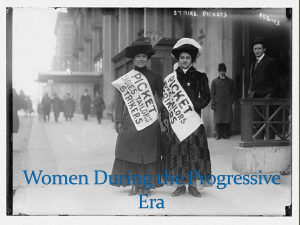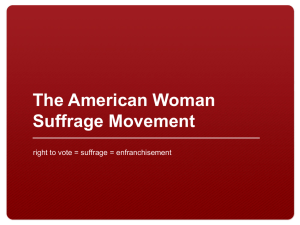Women's Suffrage Movement: NAWSA & 19th Amendment
advertisement
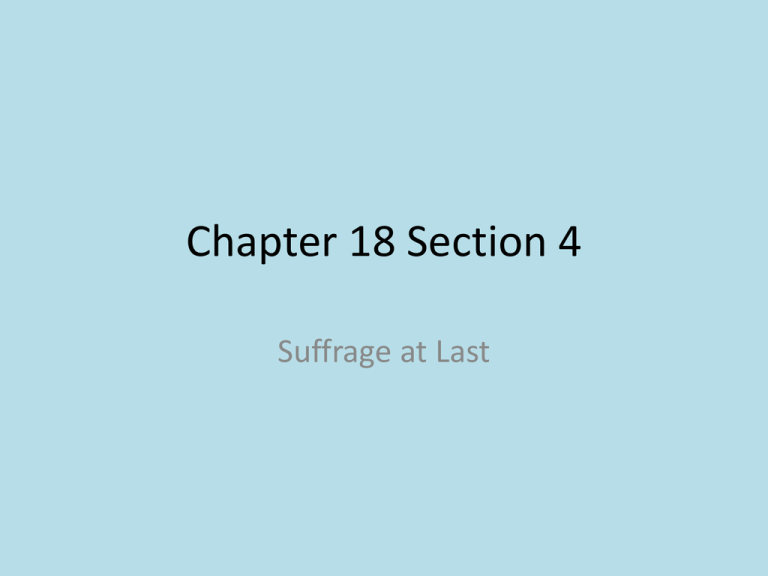
Chapter 18 Section 4 Suffrage at Last Civil Disobedience • A nonviolent refusal to obey the law in order to change it National American Woman Suffrage Association (NAWSA) • Organization formed in 1890 to continue the pursuit of women’s rights, especially the right to vote Congressional Union • Radical organization formed in 1913 and led by Alice Paul that campaigned for a constitutional amendment guaranteeing women’s suffrage How did the NAWSA and the Congressional Union differ in their tactics? • The CU was aggressive and militant and wanted new state suffrage organizations • The NAWSA opposed the CU, fearing the CU would alienate moderate supporters • The NAWSA worked with old state organizations toward a federal suffrage amendment Describe how Anthony and Stanton worked together to lead the suffrage movement. • They founded the American Equal Rights Association; published The Revolution; worked for a voting rights constitutional amendment; formed the NAWSA Why was the suffrage movement in need of new leadership after the turn of the century? • Suffrage efforts were failing • Stanton and Anthony died • New momentum had to be created How did the passage of the 19th Amendment come about? • Women in voluntary organizations and unions began to demand the right to vote • They pressed for a constitutional amendment and for individual states to allow women to vote • Ratification came in 1920 Why did the passage of the 19th Amendment take so long? • Widely help attitudes about the role of women • Loss of momentum in the suffrage movement • The amendment bill was stalled in Congress
